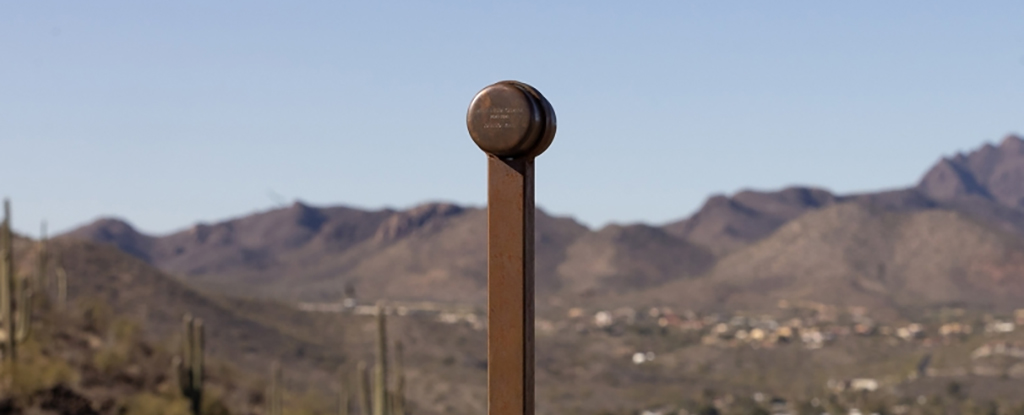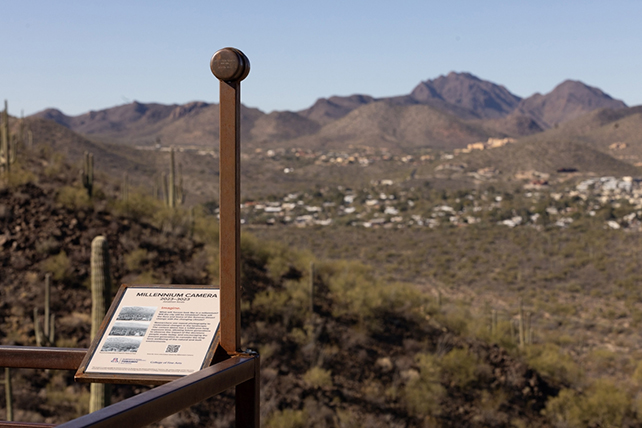
An avant-garde philosopher at the University of Arizona has initiated the Millennium Camera—a contraption crafted to capture a solitary image of the Tucson, Arizona landscape spanning a millennium.
The mind behind the Millennium Camera, Jonathon Keats, aims to stimulate profound contemplation on humanity’s past, present, and future. He envisions prompting reflections on what our society could resemble in the 31st century.
Most people have a pretty bleak outlook on what lies ahead,
says Keats. It’s easy to imagine that people in 1,000 years could see a version of Tucson that is far worse than what we see today, but the fact that we can imagine it is not a bad thing.
It’s actually a good thing, because if we can imagine that, then we can also imagine what else might happen, and therefore it might motivate us to take action to shape our future.

The camera consists of a steel pole topped with a copper cylinder. As light penetrates the cylinder, it passes through a pin-sized aperture in a thin sheet of 24-karat gold before reaching a surface treated with an oil paint pigment known as rose madder.
Keats had to rely on an informed assumption regarding the material that would undergo gradual changes over centuries to retain a discernible image. He is optimistic that the fading of the rose madder pigment in the repetitive cycles of daylight will achieve this effect.
Positioned close to a hiking trail on Tumamoc Hill with a view of Tucson, the camera is accompanied by a notice encouraging passersby to contemplate what the next millennium might unfold.
Upon the eventual revelation of the image, the most stable elements of the landscape will exhibit the highest clarity, whereas regions undergoing frequent changes will assume more ethereal and ghostly forms.
The natural landscape’s outline will probably be prominently etched, with the buildings in the shot experiencing changes in number and design over the centuries. However, the camera project remains neutral in terms of planning.
By no means is the camera making a statement about development – about how we should build the city or not going forward,
says Keats. It is set there to invite us to ask questions and to enter into conversation and invite the perspective of future generations in the sense that they’re in our minds.
Envisioning life a thousand years from now is a challenging endeavor, though it sparks fascinating contemplation. Rewind a millennium, and we find ourselves in the Middle Ages, engaging in battles with swords and axes.
In the course of another thousand years, factors such as climate change and AI technology will inevitably reshape our world, ushering in significant differences from the present day.
Keats acknowledges that numerous factors might hinder the Millennium Camera from functioning as intended: the novelty of building such a camera and the possibility of removal by future generations. Nonetheless, the plan is to maintain its operation until 3023.
If we open in the interim, then it diminishes the imagining that we need to be doing,
says Keats.





